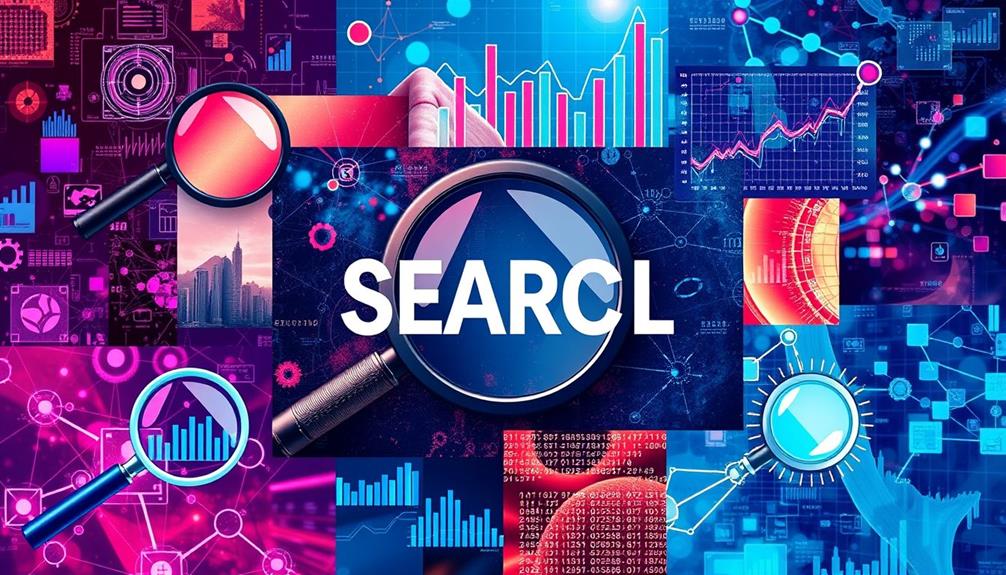To attract sustainability-conscious consumers, you need to embrace green SEO strategies that focus on eco-friendly optimization. Start with energy-efficient web hosting and coding, which can reduce your site's energy consumption considerably. Create high-quality, evergreen content that resonates with eco-conscious values while optimizing site speed for a better user experience. Utilize keyword clustering for relevant topics and guarantee your site is mobile-friendly. Engaging in social media and fostering community ties enhances visibility. By implementing these practices, you can boost brand trust and loyalty. There's much more to explore in making your online presence greener.
Key Takeaways
- Implement green web hosting and efficient coding practices to reduce energy consumption and improve website performance for sustainability-conscious consumers.
- Create high-quality evergreen content focused on eco-friendly topics to attract eco-conscious audiences and enhance organic search rankings.
- Optimize images and utilize responsive design to improve mobile loading times, catering to the increasing number of consumers using mobile devices.
- Incorporate sustainable messaging across digital marketing channels to build brand trust and attract consumers willing to pay more for eco-friendly products.
- Regularly audit site performance and user engagement metrics to align with sustainability goals and enhance the overall user experience.
Understanding Green SEO
Green SEO is all about optimizing your website with eco-friendly practices that resonate with today's environmentally conscious consumers. By adopting sustainable practices, you can notably lower your digital footprint and enhance your brand's appeal.
This entails using eco-friendly SEO practices that prioritize energy-efficient web hosting and coding to reduce your overall carbon footprint. Incorporating renewable energy strategies, like geothermal energy applications, can further position your brand as a leader in sustainability.
To truly grasp Green SEO, you should focus on creating high-quality evergreen content that aligns with sustainability themes. Google's algorithms are increasingly favoring websites that showcase environmental responsibility, so integrating eco-centric keywords into your content can boost your search rankings.
Additionally, consider the impact of your website's speed; a fast-loading site not only improves user experience but also contributes to lower energy consumption. This is a vital aspect of optimizing your website for eco-conscious users.
Benefits of Sustainable Practices

As more consumers prioritize sustainability, adopting eco-friendly practices in your SEO strategy can greatly enhance your brand's appeal. By implementing sustainable SEO practices, you can reduce your website's energy consumption by 20-30%, directly benefiting both your environmental impact and operational costs.
This commitment to sustainability can attract up to 76% of eco-conscious consumers who prefer brands that align with their values, boosting customer loyalty and engagement. In addition, utilizing AI security measures can protect sensitive data while supporting sustainable practices through efficient resource management.
Websites that focus on energy efficiency often experience faster loading speeds, which can improve search rankings by up to 15%. This not only elevates your SEO success but also enhances user experience and retention.
Additionally, integrating green messaging into your content can lead to a 50% increase in organic traffic, especially when targeting environmentally focused keywords.
Moreover, companies showcasing their commitment to sustainability see a remarkable 30% increase in brand trust among consumers. This trust considerably influences purchasing decisions and brand preference.
Implementing Eco-Friendly Strategies
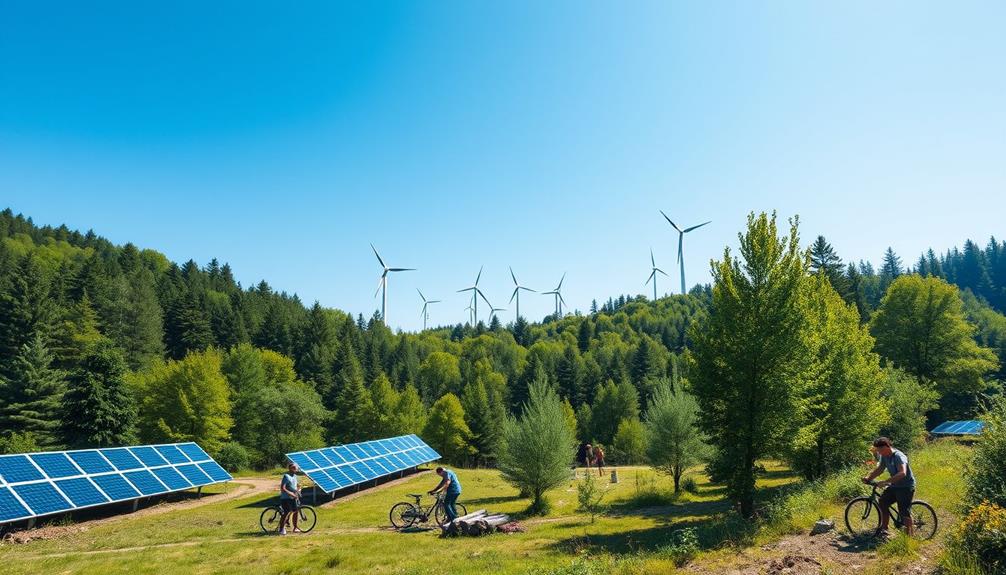
To truly capitalize on the benefits of sustainable practices, you need to implement eco-friendly strategies in your SEO efforts. Start by choosing green web hosting services that utilize renewable energy sources, which can greatly reduce your website's carbon footprint.
Additionally, consider the importance of keyword clustering to enhance your site's relevance and discoverability, aligning your content with sustainable topics that attract eco-conscious consumers.
Next, optimize your website's efficiency by compressing images and minimizing code. This not only enhances loading times but also decreases energy consumption, aligning perfectly with eco-friendly practices.
Embrace sustainable web design principles by adopting minimalistic designs and optimizing multimedia content. These strategies contribute to lower energy usage and greatly improve user experience.
Additionally, focus on creating high-quality evergreen content that remains relevant over time, reducing the need for frequent updates and conserving digital resources.
Addressing Technical Challenges

Technical challenges in Green SEO often arise when you try to balance website performance with energy-efficient practices.
To effectively tackle these challenges, you should focus on several key areas:
1. Choose sustainable web hosting: Opt for eco-friendly hosting services that align with your sustainability goals while guaranteeing compatibility with existing website structures.
Emphasizing a commitment to sustainability can resonate with island getaways that offer unique experiences for eco-conscious travelers.
2. Implement efficient coding: Simplify your code to minimize resource-heavy elements, helping to reduce energy consumption and your website's carbon footprint.
3. Regularly audit your site: Monitor technical limitations to guarantee that your sustainability measures don't negatively impact SEO performance or user experience.
4. Foster collaboration: Encourage teamwork between your technical team and sustainability experts to integrate green practices seamlessly into your website architecture.
Measuring Green SEO Success

Measuring the success of your Green SEO initiatives requires a holistic approach that goes beyond traditional metrics. Instead of focusing solely on organic traffic and rankings, you should also assess environmental impact indicators like your reduced carbon footprint and energy consumption.
Incorporating sustainable practices in your content creation can also enhance your brand's credibility and appeal to sustainability-conscious consumers. Utilize tools like Google Analytics and website performance metrics to evaluate changes in website speed and efficiency, which are essential for your sustainability goals.
Engaging in regular content performance audits can provide insights into how well your eco-friendly messaging resonates with your audience. This helps refine your sustainable content strategies.
Additionally, tracking user engagement metrics—like time on site and bounce rates—can gauge the effectiveness of your sustainable design practices, ensuring they enhance user experience.
Aligning your key performance indicators (KPIs) with broader sustainability goals, such as promoting renewable energy topics or local eco-initiatives, will help you measure how well your Green SEO practices contribute to your overall brand sustainability commitments.
Enhancing User Experience
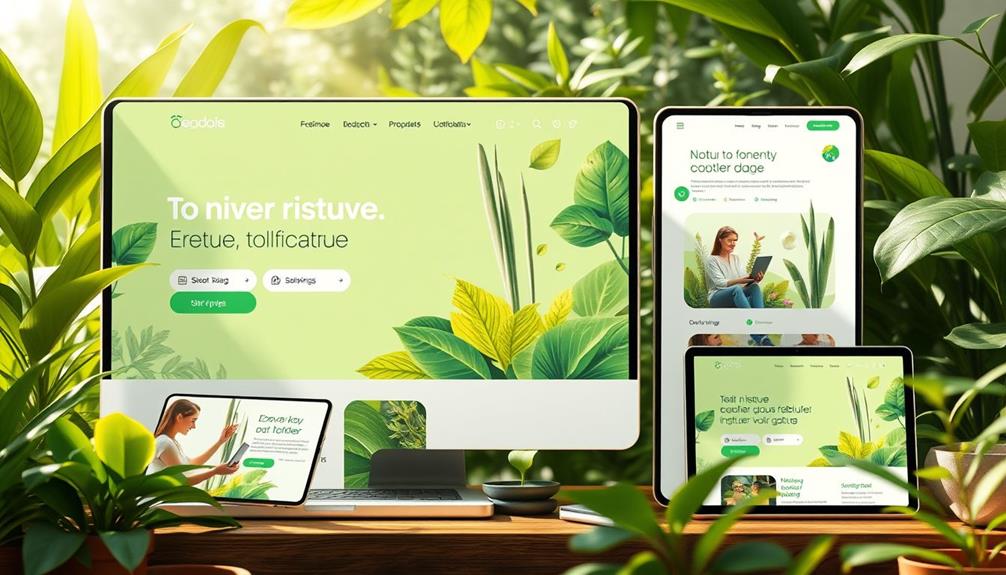
To enhance user experience, you need to focus on mobile optimization techniques that guarantee your site loads quickly and looks great on any device.
Confirming that your site has a responsive design is essential for catering to a wider audience, especially as more consumers seek services such as home cleaning options.
Intuitive navigation design makes it easier for visitors to find what they need, boosting engagement and conversions.
Plus, incorporating multimedia content efficiently can create a more dynamic browsing experience while reducing data transfer.
Mobile Optimization Techniques
In today's digital landscape, optimizing your website for mobile users isn't just a luxury; it's a necessity. With mobile devices accounting for over 50% of global web traffic, you need to make sure your site loads quickly and efficiently to enhance user experience while minimizing energy consumption.
Implementing techniques that prioritize user engagement, such as leveraging social media platforms, can further attract sustainability-conscious consumers. Here are some key mobile optimization techniques you should implement:
- Responsive Design: This makes certain your website adapts seamlessly to different screen sizes, improving usability and reducing data transfer.
- Lazy Loading: By only loading images and multimedia when they appear in the viewport, you can greatly decrease initial loading times, boosting performance and user engagement.
- Image Compression: Optimize images and code to make loading times faster, which not only enhances user experience but also reduces the carbon footprint associated with data transfer.
- Mobile-First Indexing: Focus on this strategy as search engines prioritize mobile versions of websites, improving visibility among sustainability-conscious consumers.
Intuitive Navigation Design
As mobile optimization sets the foundation for a great user experience, intuitive navigation design takes it a step further by guaranteeing users can effortlessly explore your website. By prioritizing clear labeling and a logical hierarchy, you help users easily find eco-friendly products and resources, boosting their overall satisfaction.
Successful SQA engineers also emphasize thorough testing processes, which is vital for identifying any usability issues that may arise. Implementing breadcrumb navigation can also enhance usability, allowing users to understand their location within your site and reducing the clicks needed to access sustainable content.
With over 50% of web traffic coming from mobile devices, it's important to create a design that guarantees seamless navigation on smaller screens. Utilizing a responsive design approach ensures that your navigation elements adapt well across devices, maintaining consistency and encouraging deeper exploration of your sustainable offerings.
Don't forget to incorporate effective search functionality with eco-centric filters. This allows sustainability-minded users to quickly access green products or information, catering to their specific needs efficiently.
Multimedia Content Efficiency
Effective multimedia content can noticeably enhance user experience while also promoting sustainability. By optimizing your images and videos, you can reduce file sizes through compression techniques, leading to faster loading times and decreased energy consumption.
Additionally, reflect on how candle maintenance and care can parallel the principles of digital efficiency; just as regular upkeep prolongs the life of candles, consistent optimization can extend the lifespan of your website's multimedia elements.
Here are four key strategies to reflect on:
- Implement lazy loading: This guarantees that only the necessary files for the initial view load, greatly enhancing site performance and reducing your digital carbon footprint.
- Utilize efficient video formats: Using codecs like H.264 or VP9 minimizes bandwidth requirements, improving user experience while using less energy.
- Design for dark mode: Darker backgrounds save energy on OLED screens, making your website more environmentally friendly and accessible.
- Regularly audit multimedia content: Identify optimization opportunities to boost site performance metrics, positively impacting search engine rankings and user engagement.
Incorporating these strategies not only creates an engaging multimedia experience but also contributes to a more sustainable web.
Aligning Brand Values
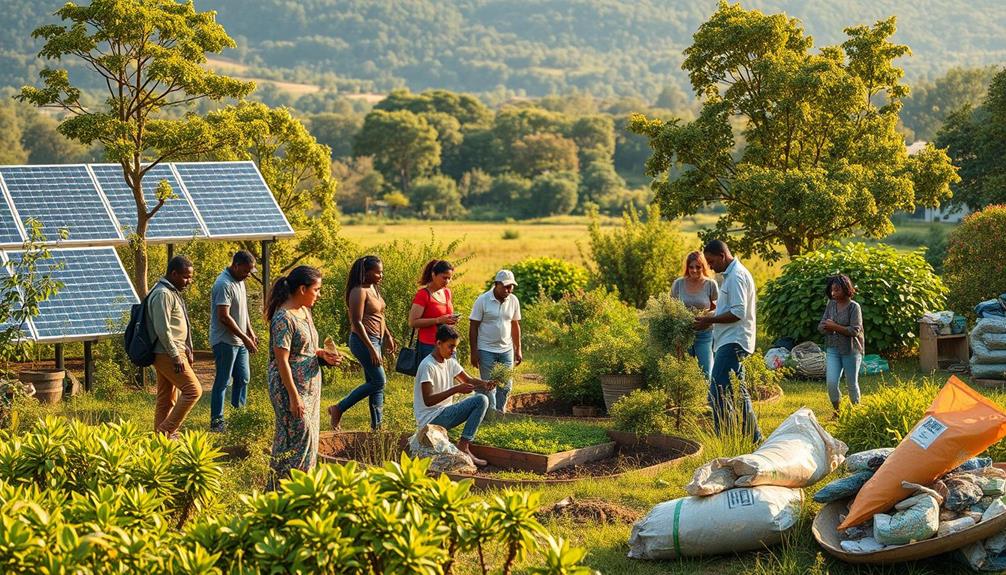
Aligning your brand values with sustainability isn't just a trend; it's a powerful way to build trust with consumers. As you commence your sustainability journey, consider that 66% of global consumers are willing to pay more for sustainable brands. A commitment to ethical practices not only enhances your reputation but also reflects a deep understanding of the impact of narcissistic abuse on relationships, which resonates with consumers seeking authenticity.
By clearly developing a brand narrative that emphasizes your environmental responsibility, you can notably enhance brand loyalty, especially among millennials, with 81% more likely to support eco-friendly businesses.
Integrating green practices consistently across all your digital marketing efforts reinforces your commitment to sustainability. This approach not only attracts environmentally conscious consumers but also positions your brand favorably in a market projected to exceed $150 billion.
Collaborating with eco-friendly organizations can further amplify your messaging, as consumers are 4.2 times more likely to trust brands that support social causes.
Don't overlook the power of sustainable SEO strategies. Not only do they improve search rankings, but they also align your brand with the growing demand for transparency and authenticity—73% of consumers prioritize these traits when making purchasing decisions.
Fundamentally, aligning brand values with sustainability is essential for fostering consumer trust and loyalty in today's market.
Multi-Channel Marketing Integration

Integrating green messaging across diverse marketing channels is essential for resonating with sustainability-conscious consumers. A cohesive approach enhances your brand image while showcasing your commitment to eco-friendly practices.
Here are four effective strategies for multi-channel marketing integration:
- Utilize digital platforms: Leverage social media, email, and blogs to share eco-friendly content, increasing visibility and attracting a growing demographic of eco-conscious shoppers.
- Engage in content sharing: Collaborate with eco-focused organizations for cross-promotion. This amplifies your sustainability message and helps you reach a wider audience.
- Incorporate local SEO: Target local communities through tailored marketing strategies. This strengthens brand loyalty among environmentally aware consumers and fosters community involvement.
- Analyze performance metrics: Regularly assess your multi-channel marketing efforts. Identifying effective strategies will enhance the reach and impact of your sustainability messaging across all platforms.
Future Trends in Green SEO

As businesses embrace the importance of sustainability, Green SEO is evolving to meet the demands of eco-conscious consumers. You'll find that a growing number of consumers are willing to pay more for eco-friendly products, pushing you to adopt innovative SEO strategies that highlight your commitment to sustainability.
With advancements in artificial intelligence and machine learning, you can expect more accurate keyword suggestions focused on the sustainable web, enhancing your online presence.
The shift towards mobile and voice search means you need to optimize for these trends while maintaining your eco-friendly practices. As 87% of consumers prefer brands that prioritize environmental responsibility, integrating renewable energy sources into your digital operations can greatly reduce your carbon footprint.
Future Green SEO strategies will increasingly focus on local SEO and community engagement. As more consumers seek to support local businesses with sustainable practices, you'll notice a 30% increase in local search queries related to sustainability.
Opportunities for Sustainable Growth
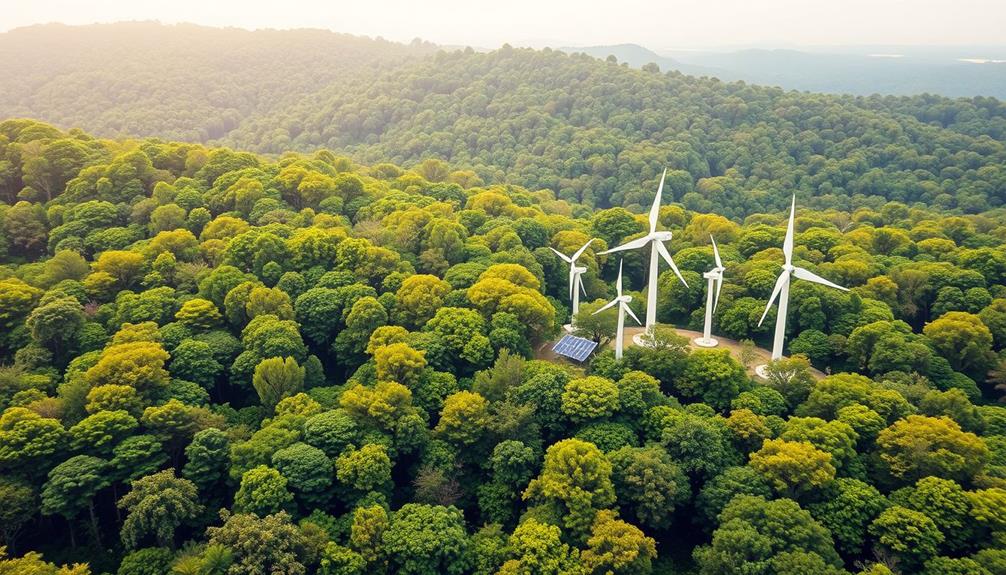
You can tap into opportunities for sustainable growth by forming eco-friendly partnerships that align with your brand values.
Innovative marketing strategies can help you reach eco-conscious consumers enthusiastic to support sustainable initiatives.
Eco-Friendly Partnerships
Forming eco-friendly partnerships can greatly elevate your brand's sustainability efforts while driving growth. By collaborating with like-minded organizations, you not only enhance your credibility but also connect with sustainability-conscious consumers.
Here are four key benefits of establishing these partnerships:
- Boosted Visibility: Collaborating with eco-friendly brands increases your visibility, as 77% of consumers prefer brands supporting sustainability initiatives.
- Amplified Reach: Partnering with sustainability influencers can considerably enhance your reach, yielding up to 11 times higher ROI through influencer marketing.
- Community Engagement: Joining forces with local environmental organizations fosters goodwill, with 63% of consumers more likely to support businesses contributing to local sustainability efforts.
- Consumer Trust: Participating in green certifications through partnerships can bolster consumer trust, as 66% of global consumers are willing to pay more for sustainable brands.
Innovative Marketing Strategies
In the domain of sustainable growth, innovative marketing strategies play a pivotal role in connecting with eco-conscious consumers. By incorporating storytelling into your online content, you can effectively highlight your brand's sustainability journey, fostering trust and engagement.
With 66% of consumers willing to pay more for sustainable brands, this approach can considerably enhance your marketing strategy.
Utilizing social media platforms to share eco-friendly content can boost your brand visibility, as 70% of consumers are more likely to purchase from brands that actively promote their sustainability efforts.
Collaborating with eco-conscious influencers can further enhance your credibility and reach, yielding up to 11 times higher ROI compared to traditional marketing.
Additionally, targeted email marketing campaigns featuring sustainable products can increase your open rates by 20% and click-through rates by 25% among environmentally conscious consumers.
Don't forget to leverage data analytics to understand consumer preferences for sustainability, as 72% of consumers expect brands to take action on environmental issues.
Conclusion
You've learned how to optimize for sustainability-conscious consumers, but let's be honest—who wouldn't want to save the planet while boosting their brand? By embracing green SEO, you're not just joining a trend; you're becoming a part of a movement that actually matters. So, while your competitors scramble to catch up, you'll be leading the charge with eco-friendly strategies. Isn't it ironic? The more you care, the more your business thrives. Now, isn't that a win-win?

